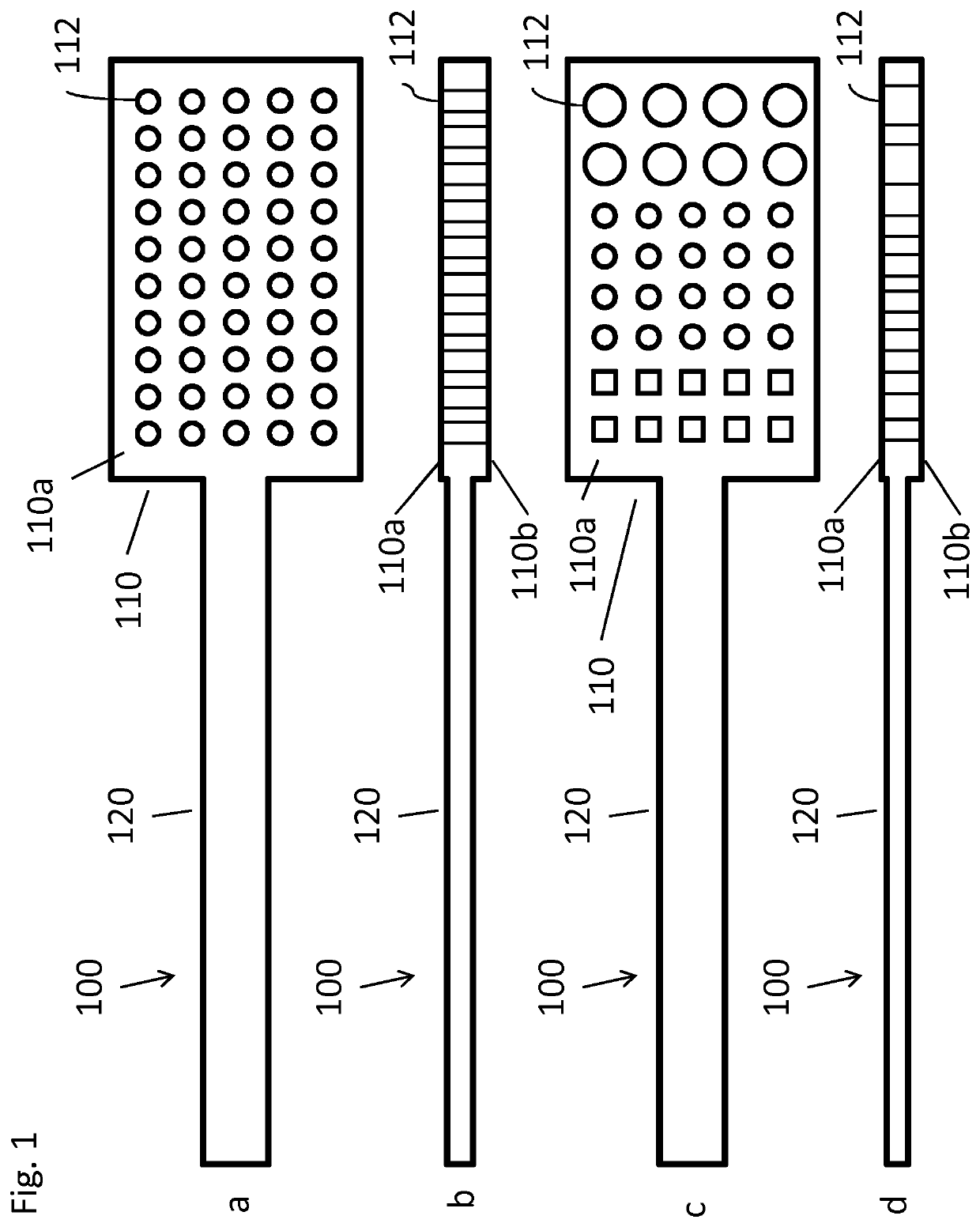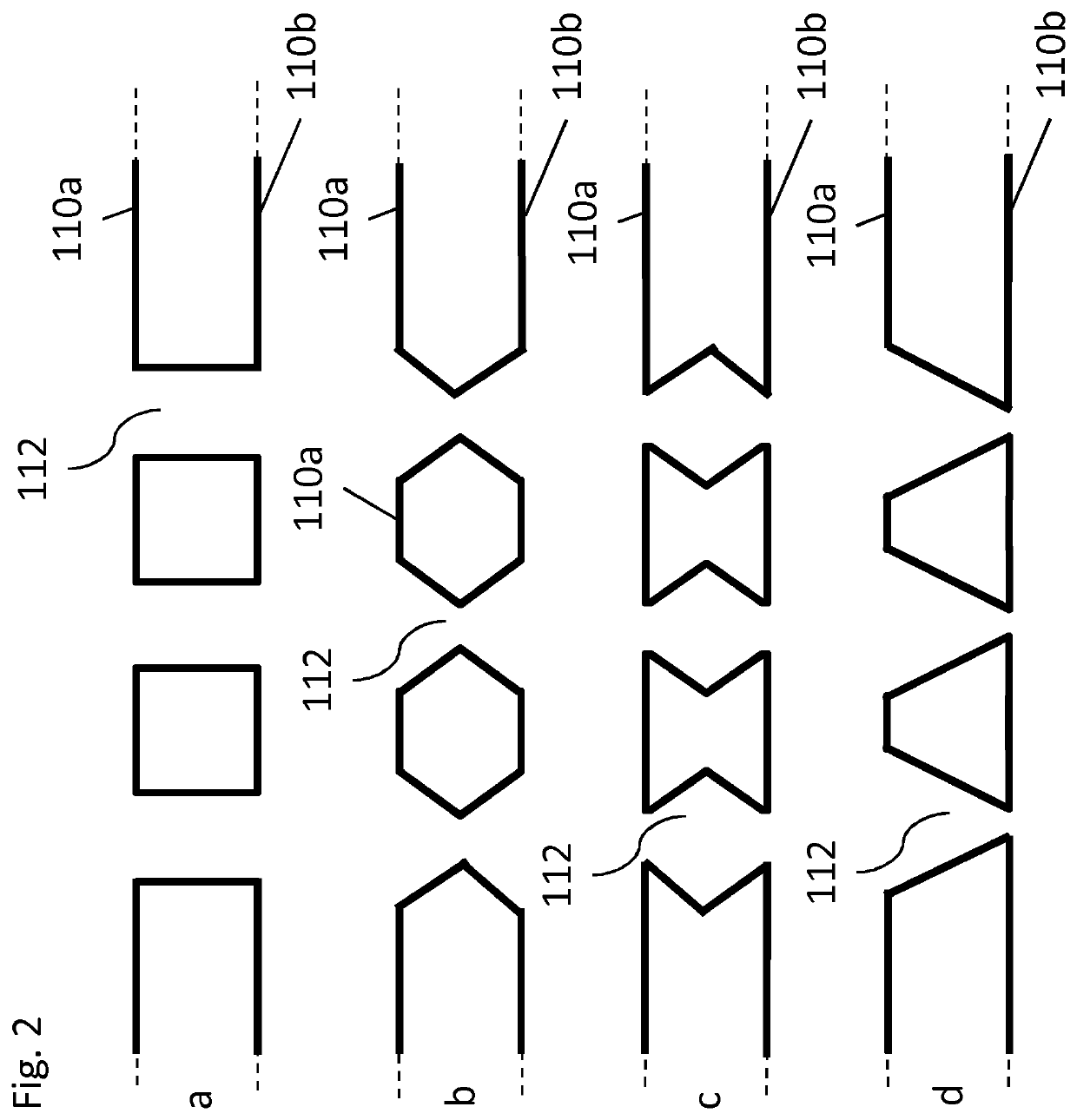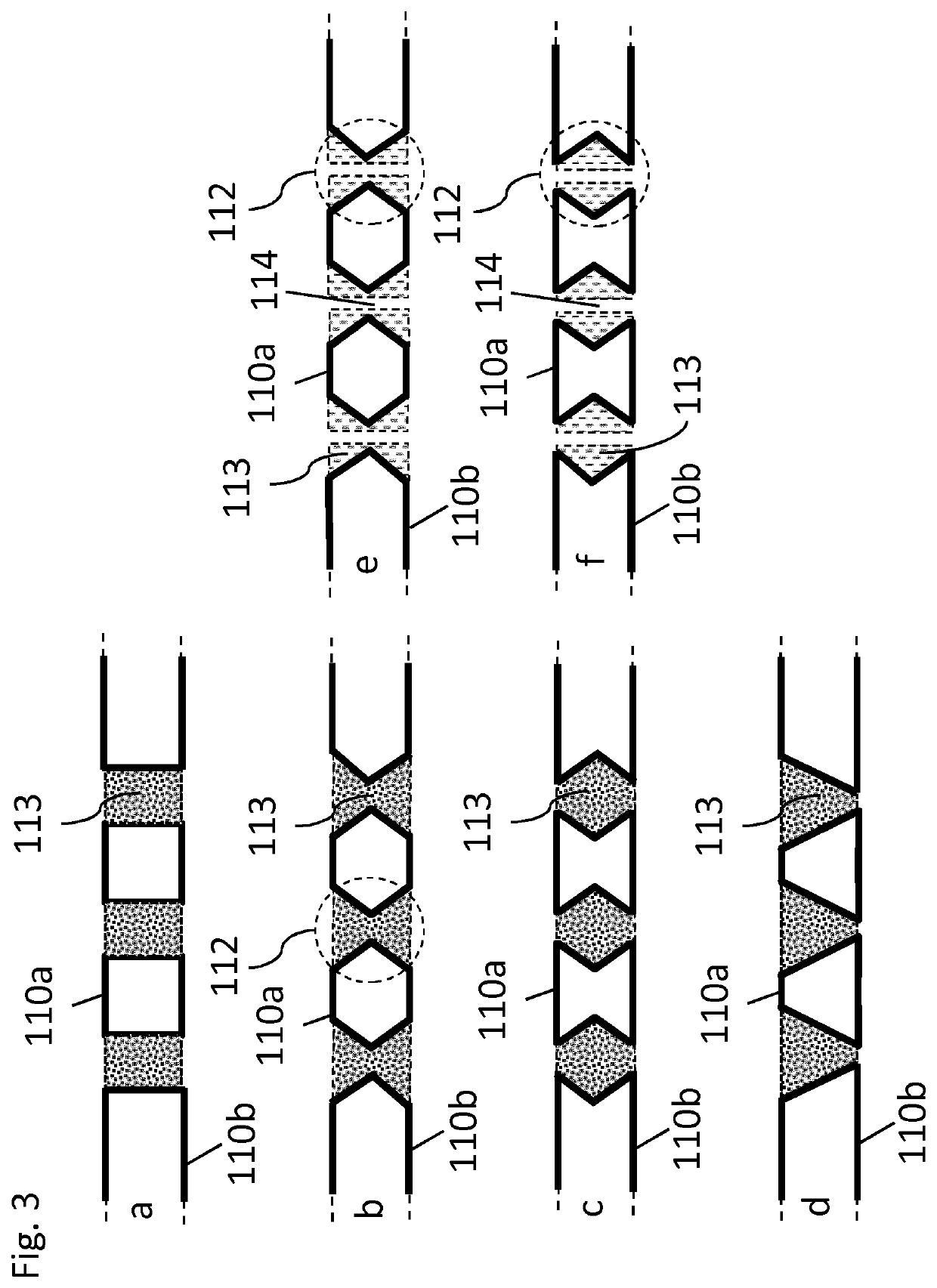Device for bioassay and methods for preparation and use thereof
a bioassay and device technology, applied in the field of bioassays, can solve the problems of increasing the risk of antimicrobial resistance significantly, affecting the accuracy of the results, and the complexity of the process, so as to achieve the effect of minimal hands-on time, sensitivity and ease of us
- Summary
- Abstract
- Description
- Claims
- Application Information
AI Technical Summary
Benefits of technology
Problems solved by technology
Method used
Image
Examples
example 1
[0117]Our novel device consists of a dipstick in which an array of small through holes with well-defined volumes is created by laser drilling or molding. For example, a polymethyl methacrylate (PMMA) dipstick with an array of 180 holes of 200 nl volume fabricated by CO2 laser drilling.
[0118]The dipsticks are prepared in two steps:[0119]i) The device is dipped in gel solution such that the holes are filled. After filling, in-situ gelation of hydrogel occurs.[0120]ii) The device is washed and dried, resulting in a dried gel structure in each individual hole.
[0121]Operation of the dipstick requires three very simple and short steps:[0122]i) The dipstick is placed in bacterial sample for 1 minute, during which the dipstick holes are filled with sample (FIG. 2). Thereafter, the dipstick is swiped with a tissue to remove excess sample on the top and the bottom surface of the dipstick, but in which the gel retains the sample inside the holes.[0123]ii) The dipstick is placed on a chromogeni...
example 2
[0126]Dipstick preparation: Our novel device consists of a dipstick, in which we create (by drilling or molding) an array of small through-holes with well-defined volume. We fabricated dipstick hole arrays of 180 holes with volume 800 nL. The holes are filled with a hydrogel / toluene emulsion, after which the hydrogel is cross-linked, the toluene is replaced by IPA, the IPA is evaporated, and the gel is dried, resulting in a microporous dry gel structure in each of the holes.
[0127]Dipstick operation in four simple and short steps: The dipstick is i) placed in the bacterial sample for 1 minute, during which the dipstick holes fill with sample. ii) The dipstick is swiped dry on a tissue to remove the excess sample on the top and bottom surface of the dipstick, but in which the sample inside the holes is retained by the gel. The gel retaining the sample during swiping is the main “microfluidic” innovation. iii) Thereafter the stick is placed on a chromogenic agar (Chromagar Orientation,...
example 3
[0129]Our novel device consists of a dipstick in which an array of small through holes (capture zones) with well-defined volumes is created by laser drilling or molding. For example, a polymethyl methacrylate (PMMA) dipstick with an array of 180 holes of 200 nl volume fabricated by CO2 laser drilling.
[0130]The dipsticks are prepared in three steps:[0131]i) The device is filled with chromogenic agar (Chromagar Orientation, Chromagar, France) at 50° C., at which temperature the chromogenic agar is in liquid form.[0132]ii) After filling, device is cooled down to room temperature to form a gel in each hole.[0133]iii) The device is freeze dried, resulting in a microporous dried gel structure which contains bioassay reagents in each individual hole.
[0134]Operation of the dipstick requires three very simple and short steps:[0135]i) The dipstick is placed in bacterial sample (E. coli in broth) for 1 minute, during which the dipstick holes are filled with sample. Thereafter, the dipstick is ...
PUM
| Property | Measurement | Unit |
|---|---|---|
| distance | aaaaa | aaaaa |
| depth | aaaaa | aaaaa |
| volume | aaaaa | aaaaa |
Abstract
Description
Claims
Application Information
 Login to View More
Login to View More - R&D
- Intellectual Property
- Life Sciences
- Materials
- Tech Scout
- Unparalleled Data Quality
- Higher Quality Content
- 60% Fewer Hallucinations
Browse by: Latest US Patents, China's latest patents, Technical Efficacy Thesaurus, Application Domain, Technology Topic, Popular Technical Reports.
© 2025 PatSnap. All rights reserved.Legal|Privacy policy|Modern Slavery Act Transparency Statement|Sitemap|About US| Contact US: help@patsnap.com



